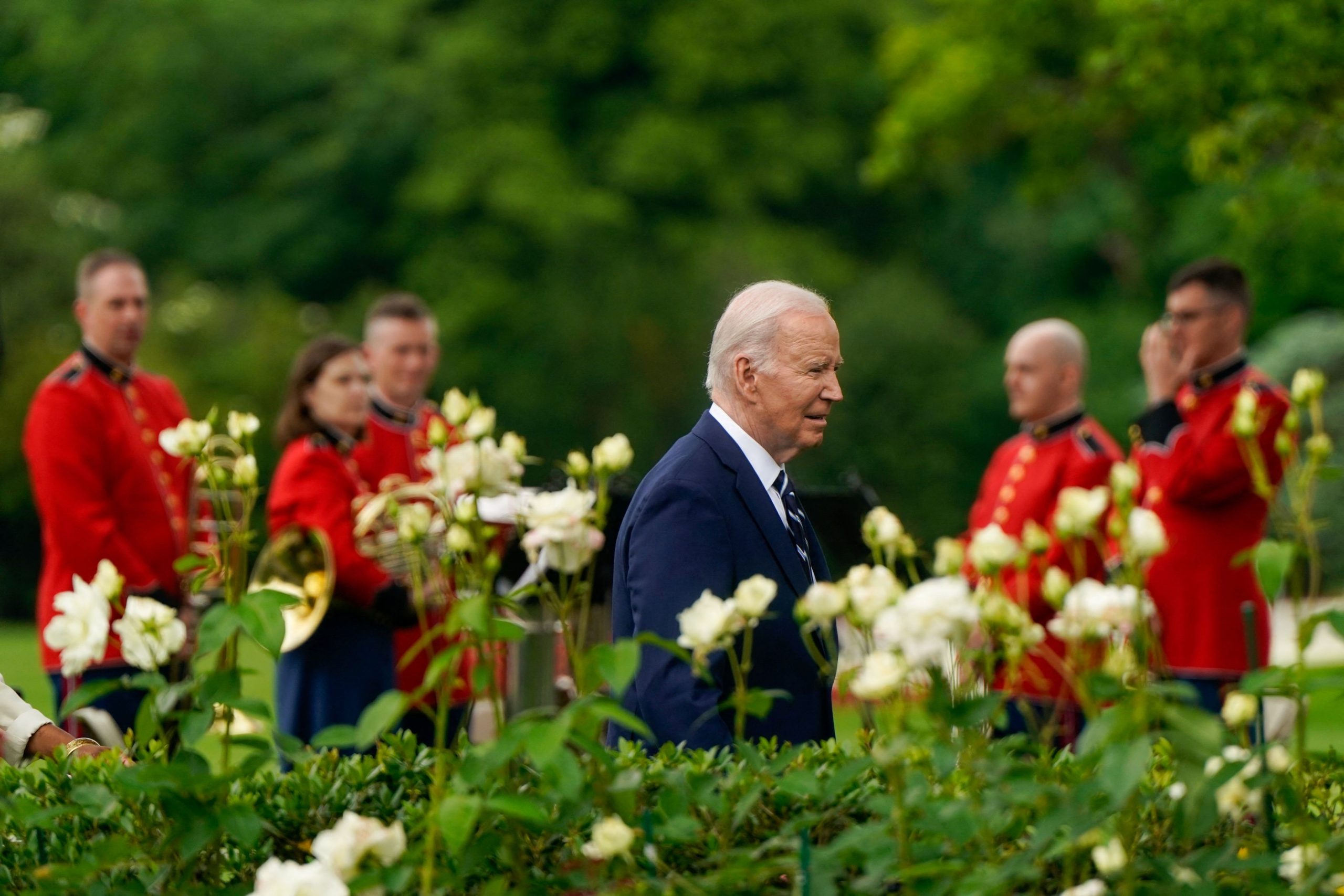The new tariffs President Biden announced last week aren’t economically significant. Symbolically, they are huge.
The U.S. buys almost no electric vehicles, steel or semiconductors—all targets of the tariffs—from China. But, by adding to, rather than rescinding, tariffs imposed in 2018 by former President Donald Trump , it signals that the decoupling of the Chinese and U.S. economies is becoming irreversible.
More important, the tariffs are the final piece of an economic strategy for competing with China.
A three-legged stool
This strategy is a three-legged stool. The first consists of subsidies to build a viable technology manufacturing sector, from clean energy to semiconductors. The second is tariffs on Chinese imports that threaten those efforts. The third is restrictions on access to money, technology and know-how that could help China compete. A fourth leg, a unified economic front with allies, remains unrealized.
When it comes to economic strategy, the U.S. is something of a neophyte. China maps its path to economic dominance in five-year plans. Japan’s postwar economic rise was steered by its powerful Ministry of International Trade and Industry.
The U.S. strategy doesn’t have a name or even a home. Blame that on the historical wariness of industrial policy (state support for favored sectors) and the fragmentation of economic authority between the president and Congress, different administrations and sometimes factions within the same administration.
Indeed, the U.S. strategy emerged piecemeal. As far back as 2016, Obama administration officials and alumni, including Jake Sullivan , now Biden’s national security adviser, had begun questioning the bipartisan consensus favoring free trade and engagement with China.
The 2017 pivot
In 2017, Trump came into office with an economic and national security team determined to break with the status quo. That year they formally abandoned engagement and designated China a strategic competitor.
Trump’s initial execution, though, was haphazard. He aimed his first major tariffs at allies instead of China, to protect steel and aluminum instead of technology. He championed a $10 billion Foxconn Technology liquid-crystal display factory in Wisconsin that never materialized . He reversed his administration’s ban on the sale of sensitive technology to Chinese telecom supplier ZTE .
In 2019, then-candidate Joe Biden tweeted that he would reverse Trump’s “irresponsible tariff war” with China, suggesting a return to the pre-Trump status quo.
It never happened. Internally, Biden’s top advisers were divided. Treasury Secretary Janet Yellen championed lower tariffs and engagement with China. Trade Ambassador Katherine Tai advocated for tariffs. Others gave priority to climate cooperation and cheap clean-energy equipment. As tensions with China grew, such as over a spy balloon , so did the hurdles to re-engagement.
The strategy that has ultimately emerged is largely the work of Sullivan, according to current and former administration officials. He sees trade, domestic economic policy and security as integrated. And, more than anyone else, he has Biden’s confidence, these people said.
Yet the strategy also has bipartisan heritage, drawing heavily on initiatives that began under Trump. Last week’s tariffs resulted from a review of Trump’s own investigation that led to the initial tariffs on China.
In 2020, after prodding by Trump officials, Taiwan Semiconductor Manufacturing Co ., the dominant manufacturer of leading-edge semiconductors, announced it would build a chip fabrication plant, or fab, in Arizona. Around that time, a bipartisan bill to subsidize such plants was introduced in the Senate.
Pushed by Biden officials, that bill eventually became law in 2022 . This enabled the Commerce Department to announce some $29 billion in subsidies to the world’s leading chip makers in recent months.
They include TSMC, which now says it will build three fabs, up from one, in Arizona by 2030. If TSMC follows through, its customers such as Apple and Nvidia might one day both design and manufacture their chips in the U.S. instead of Asia.
Semiconductor controls
Biden’s sweeping restrictions on the sale of advanced chips and chip-making equipment to China are modeled on restrictions Trump officials first used against Huawei Technologies.
Biden officials don’t like to connect these restrictions, ostensibly aimed solely at security threats, to their broader economic strategy. Yet a connection plainly exists.
The restrictions are a powerful incentive for tech companies to invest in the U.S. or its allies instead of China. The White House, for example, is engaged in a continuing investigation into the security risks of “connected cars,” which share driver data with the manufacturer. This may provide a pretext to block all Chinese EVs from the U.S. market, even if they are assembled in the U.S. or Mexico.
So the U.S. finally has a strategy for economic competition. Whether it succeeds remains to be seen.
For one thing, it’s late. China’s dominance in key markets has only grown since 2017. The world is now bracing for a “ second China shock ” of cheap manufactured exports overwhelming local producers.
For example, its share of global production of “legacy” chips used in cars, appliances and other basic applications has grown from 17% in 2015 to 31% in 2023. It is on track to hit 39% by 2027, according to research firm Rhodium Group.
Biden announced last week that tariffs on such chips would double to 50% from 25%, which in theory should divert production away from China. But those chips typically enter the U.S. embedded in other products, untouched by tariffs.
And China’s capacity expansion is largely immune to tariffs because it is driven by self-sufficiency, not profit, said Jimmy Goodrich , senior adviser for strategic technology analysis to the Rand Corporation.
The missing leg
The economic strategy has also been distracted by politics. Like Trump before him, Biden is obsessed with steel and its importance to rust-belt swing states. He raised tariffs on the metal even though the U.S. already has plenty of domestic and allied alternatives to China. He didn’t raise tariffs on drones, which increasingly have national security roles, for which the U.S. really does depend on China.
Finally, despite lots of talking, the U.S. and its allies have struggled to form a united front for competing with China. While Biden officials suspended Trump’s tariffs on European Union steel and aluminum, a deal to rescind them altogether failed in part because the EU wouldn’t coordinate with the U.S. against Chinese steel. Fearful of falling behind the U.S. and China on EVs, the EU is busy teeing up its own subsidies and tariffs .
Such divisions could widen further should Trump return to office and carry through with this threat to hit all imports, including from allies, with tariffs. China finally faces determined economic pushback from the West, but it can take comfort that it isn’t unified.
Write to Greg Ip at greg.ip@wsj.com



